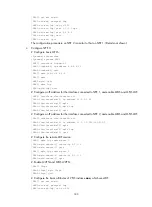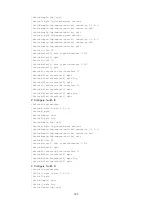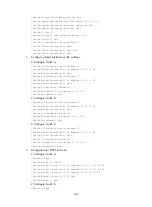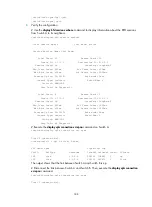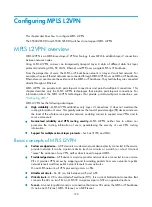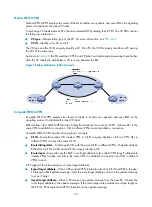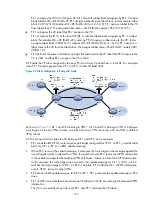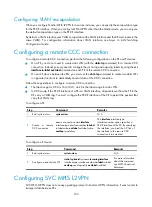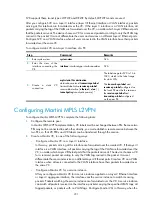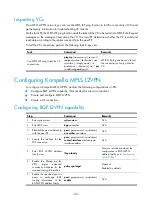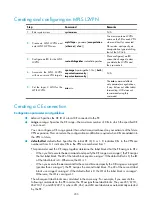
196
PE 1 compares the ID (12) of the peer CE (CE 12) with the label blocks assigned by PE 1. If a label
block satisfies LO<=CE ID<LO+LR, PE 1 assigns a label from the label block. In this example, label
block 2 (1055/5/10) satisfies LO<=CE ID<LO+LR (5<=12<5+10). PE 1 assigns a label to the VC
from label block 2. The assigned label value = LB+CE ID-LO, namely 1062 (1055+12-5).
•
PE 1 calculates the VC label that PE 2 assigns to the VC:
PE 1 compares the ID (1) of the local CE (CE 1) with the label blocks assigned by PE 2. A label
block that satisfies LO<=CE ID<LO+LR is used by PE 2 to assign a label value to the VC. In this
example, label block (3000/0/15) satisfies LO<=CE ID<LO+LR (0<=1<0+15). PE 2 assigns a
label value to the VC from the label block. The assigned label value = LB+CE ID-LO, namely 3001
(3000+1-0).
•
PE 2 performs the same calculations and gets the same results: the VC label that PE 2 assigns to the
VC is 3001 and that PE 1 assigns to the VC is 1062.
A PE adds the VC label assigned by the peer PE into a Layer 2 packet from a local CE. For example,
when PE 1 forwards packets from CE 1 to CE 2, it adds VC label 3001.
Figure 52
Label distribution in Kompella mode
As shown in
, CE 1 and CE 2 belong to VPN 1. CE 3 and CE 4 belong to VPN 2. Configure
route targets for the two VPNs to make sure CEs in the same VPN can set up a VC and CEs in different
VPNs cannot.
A VC is set up as follows (take the VC between CE 1 and CE 2 as an example):
1.
PE 1 sends the RD, CE ID, route target (export target configured for VPN 1 on PE 1), and the label
block for CE 1 to PE 2 in a BGP update message.
2.
When PE 2 receives the update message, it compares the route target in the message against the
import targets locally configured for VPNs. If a match is found, PE 2 learns the L2VPN information
in the update message for the matching VPN. Otherwise, it does not learn the L2VPN information.
In this example, the route target value carried in the update message for CE 1 is 100:1, which
matches the import target of VPN 1 on PE 2. Therefore, PE 2 adds the CE 1 L2VPN information
only to VPN 1 but not to other VPNs.
3.
PE 2 sends a BGP update message for CE 2 to PE 1. PE 1 processes the update message as PE 2
does.
4.
PE 1 and PE 2 calculate the local and remote VC labels for the VC according to the learned L2VPN
information.
The VC is successfully set up after both PE 1 and PE 2 calculate the VC labels.


